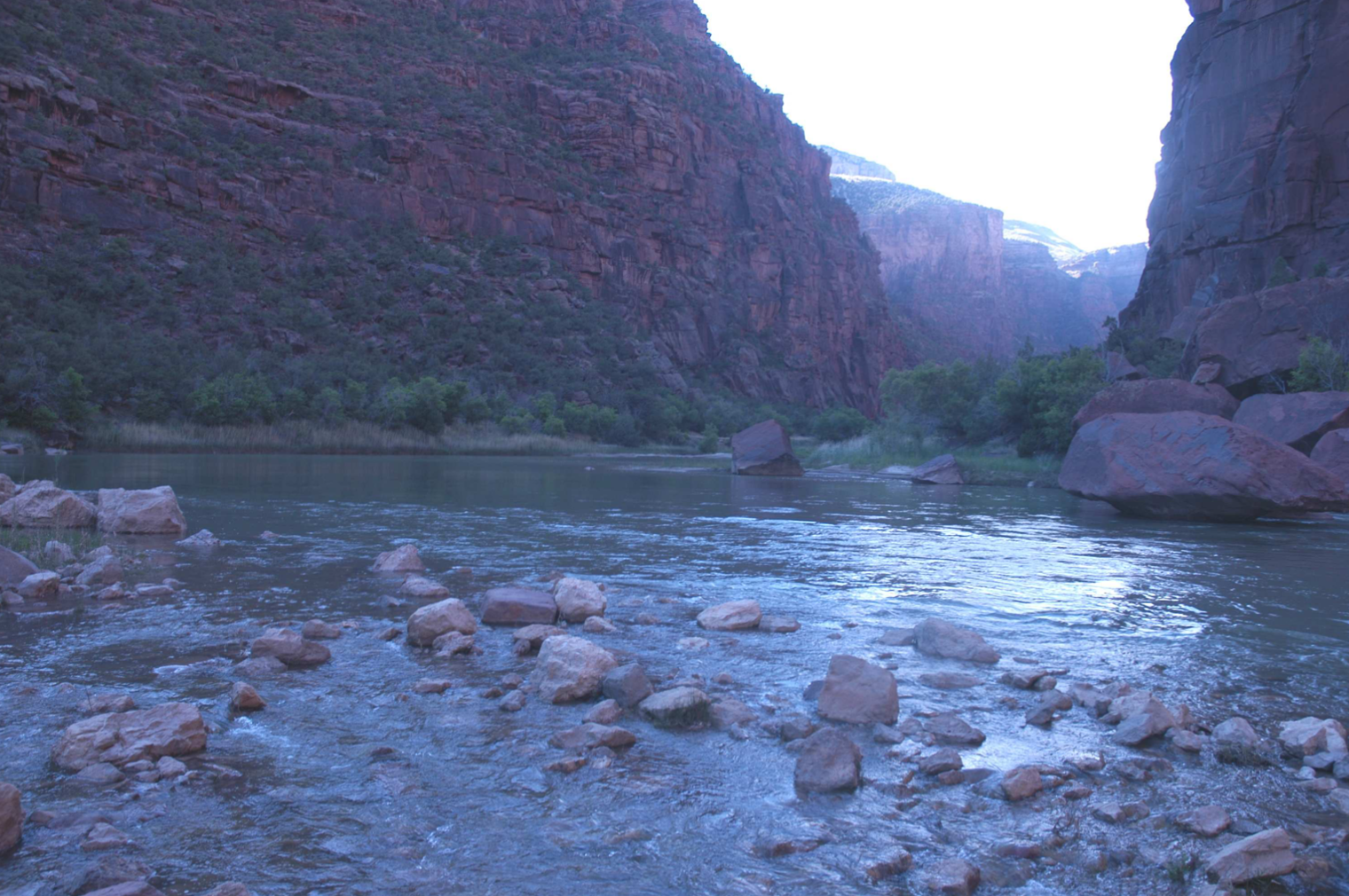Along our expedition from Flaming Gorge Dam to the takeout at the Split Mountain boat ramp, we rafted through several debris fan dominated canyons: Red Canyon, the Canyon of Lodore, Whirlpool Canyon, and Split Mountain Canyon. These canyons are characterized by tall, stratified canyon walls prone to debris flows down steep tributary ravines. Debris flows typically occur as a result of intense precipitation, and can transport massive quantities of unconsolidated material, ranging in size from clay to boulders and logs. Debris flows that enter the channel create fans that can be very difficult for the Green to move. These debris fans create a suite of hydraulic and depositional features collectively known as a fan-eddy complex (Figures 1, 2, 3, and 4)

Figure 1. Winnies Rapid Debris Fan. The fan (left) has obstructed the channel, constricting flow and creating a rapid adjacent to the fan. Below, the flow separates, creating a slowly circulating eddy directly behind the fan (Photo by Carson Jeffres).

Figure 2. Upstream of the Wild Mountain debris fan. Debris fan deposits obstruct the channel, slowing water velocity and raising elevation upstream of the fan. Sand deposition due to slower flows have formed channel margin deposits alongside the left bank (Photo by Robert Thompson).

Figure 3. Downstream of Winnies Rapid. Right: Sand deposition occurring in the eddy during higher flows has formed a separation bar (front) and a reattachment bar (back). Beyond lies an unusually large expansion bar, lightly covered with vegetation (Photo by Carson Jeffres).

Figure 4. River Mile 233 Expansion Bar (Right, far side of the channel). During large floods, reworked material taken from the debris fan upstream is deposited downstream of the sandbars, as flow reattaches past the eddy. At this point the flow expands and can no longer carry coarser material such as gravel and cobbles (Photo by Peter Moyle).
